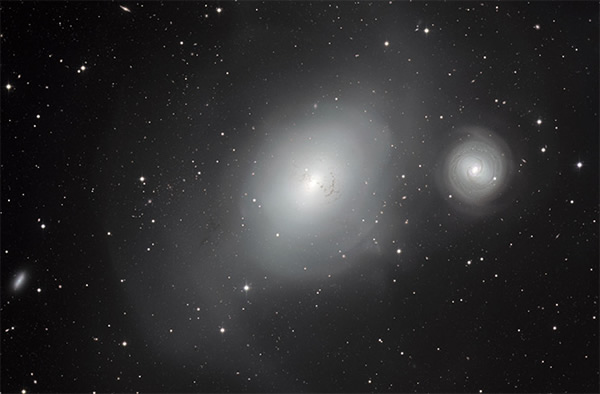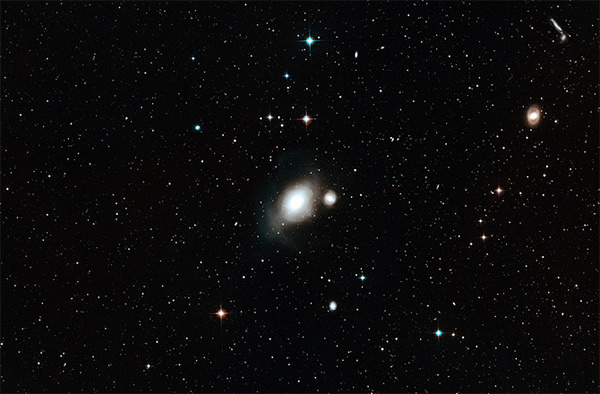A Killer Portrait of a Galactic Cannibal
This new image from the MPG/ESO 2.2-metre telescope at ESO’s La Silla Observatory in Chile shows a contrasting pair of galaxies: NGC 1316, and its smaller companion NGC 1317 (right).
NGC 1316 has a lot of skeletons in its closet -- literally.
Located approximately 60 million light-years away in the southern constellation of Fornax (The Furnace), NGC 1316 is a large lenticular galaxy that has a rather colorful past. It is notable as being the brightest radio source in Fornax and the fourth brightest source in the whole sky -- the powerful emissions are caused by the active supermassive black hole that lurks in its core.
Now, astronomers using the MPG/ESO 2.2-meter telescope at ESO's La Silla Observatory in Chile have taken a very detailed look at the galaxy's structure, revealing its unusual dust lanes and small star clusters. After a bit of celestial detective work, astronomers know that these features were created when NGC 1316 swallowed a smaller galaxy around 3 billion years ago.
The above observation also shows wispy trails of stars reaching out into intergalactic space, a sure sign of violent tidal interactions during NGC 1316's cannibalistic past. These are galactic 'battle scars' of sorts and their presence acts as a cosmic memorial of galaxies past.
Sitting right next to NGC 1316 is an elegant spiral galaxy NGC 1317 that appears to have had a less eventful history. However, the small spiral is located very close to NGC 1316, potentially indicating that NGC 1317 will be on the menu in the future.
This picture shows the sky around the pair of galaxies NGC 1316 and 1317. It was created from images forming part of the Digitized Sky Survey 2.













